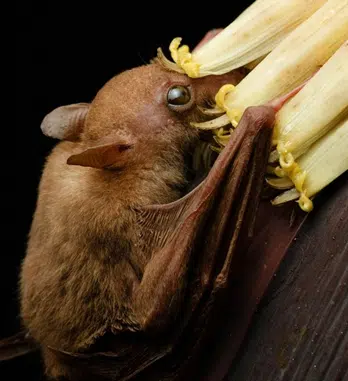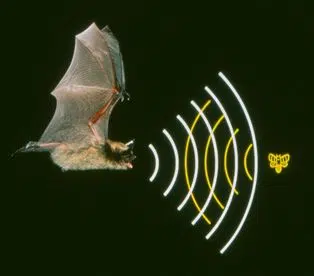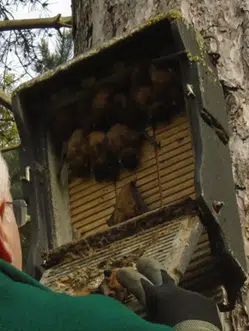International bat week (Oct. 24th-31st) is a celebration of our spooky flying friends and a chance to learn more about just how important bats are! What many people may not know is how big of a role bats play in our natural ecosystems, research industry, and our economy.
There are many bat species present in Virginia, a few include the eastern small-footed bat, hoary bat, Seminole bat, American long-eared bat, and the silver haired bat. The average bat can live up to 20 years, some species even longer! Generally, most bats found in northern Virginia are relatively small, with the wingspan ranging from 7-11.4 inches. Despite being small some bats can reach speeds up to 100 mph during flight!
You probably notice bats most at night, the reason behind that is because they’re nocturnal. In other words, during the night is when they are most active. They feed on insects, like mosquitoes and moths, and can eat up to an incredible 4,000 bugs a night! Not only are they free pest control experts, but they also aid in pollination and seed dispersal. Because bats pollinate at night, they aren’t always recognized as one of the major pollinators. However, they are responsible for pollinating many crops such as bananas, cacao, guava, mangos, figs, and many more. In addition to pollination, they also eat pests off the crops such as beetles, ants, and larvae. This helps to reduce the amount of pesticides farmers need to use on their crops. Their droppings are a great fertilizer as well, providing plants and trees with lots of nitrogen, phosphorus, potassium, and other essential nutrients for growth and development. Free pest management and lawn care, bats do it all!
Another lesser-known fact about bats is how much they have contributed to the field of biomimetics. Biomimetics studies how to artificially mimic natural processes and materials. Bats use echolocation, which is a navigation system in which they emit a sound and wait for the echo to return to them in order to create a 3D map of their surroundings. This ability helps them to find insect prey as well as navigate their environment. This process has been an inspiration for the development of sonar used on ships as well as ultrasounds.
Another way bats contribute to science is through air quality monitoring. When there are higher amounts of pollution in the air, bats have to produce higher rates of sonar. Scientists are able to measure this and keep better track of which chemicals are present in the air and in what quantities.
So, how can you be a bat advocate?
- Reduce your light pollution by turning off unnecessary outdoor lights at night. Light pollution can alter urban bats day/night patterns and interfere with reproduction.
- Promote natural habitats by leaving dead trees where they are. Dead trees are often used by bats as a place to roost.
- Plant native plants that attract insects for bats to feed on.
- Reduce the use of pesticides in your garden.
- Install a bat box away from artificial light to provide a healthy environment.
Written by Ranger Emily Lawrence



